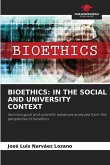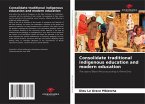This bioethics course is called university because it is intended for undergraduate students and contains universal subjects studied in bioethics. It includes thirteen chapters with a selective bibliography. In this course, the student learns the notions of morals and ethics. He discovers the relationship between ethics and medical practice. And then, he penetrates the history of bioethics and grasps major themes such as genetic engineering, contraceptive techniques, assisted reproduction, organ transplant techniques, tissue transplantation, abortion, while clarifying for each theme the ethical issues raised. Then, the ethical problems triggered by patient support, therapeutic relentlessness, euthanasia, coma and celebrable death are examined. To resolve a bioethics problem, the student is taught the types of bioethics committee and the methods of analysis with supporting exercises. And in Africa? The course explains in the last chapter an African strategy to circumvent sterilityin a couple.
Bitte wählen Sie Ihr Anliegen aus.
Rechnungen
Retourenschein anfordern
Bestellstatus
Storno








